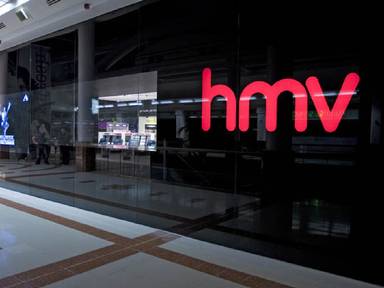How the internet impacts on high street retail

How the internet impacts on high street retail
Recent announcements of a number of high-profile high street chains in the UK being put into administration highlight the risks for retailers that don’t change their business models to reflect how consumers are now shopping, writes Paul McGarrity.
The UK high street experienced its own winter of discontent in January as some of the biggest names in high street retail went bust. During the first few weeks of the year, HMV, Jessops and Blockbuster all joined the ranks of former high street titans that have fallen into administration.
What’s perhaps most surprising about the announcements is that so many people in government, media and business treated the news as if it was unexpected. Radio chat shows on the subject featured scores of callers bemoaning the loss of another high street brand. Ill-informed politicians queued up to demand yet more state action to shore up failing businesses.
However, another way to look at the wave of high street losses is that it’s the natural outcome of a failure to react and adapt to what customers want. Ultimately HMV, Jessops and Blockbuster failed because they refused to adapt to how their customers were shopping.
The first warning signs of just how much the internet was going to revolutionise retail occurred in the late 1990s. Since the late 90s pure play retailers selling CDs, DVDs and digital equipment have slowly stolen the lunch of high street chain by offering cheaper prices, more choice and faster distribution. Fatally for the high street chains they continued to load their companies with more debt and invest in over-priced commercial property contracts at a time when the market was going online. You can sympathise with the staff who served and supported their former employers, but why get misty-eyed for high street dinosaurs who were let down so badly by directors who wouldn’t change or innovate.
No doubt there will be more high street retailers suffering the same end as HMV. Close to the top of the list must be Waterstones which is also hampered by massive online competition and high reliance on high street footfall. As a former customer, my shopping habits are indicative of how others now buy books. I stopped shopping in Waterstones years ago, about the same time as Amazon and other pure-play online retailers were starting to seriously challenge the book and music market. The last time I shopped in Waterstone I was told that a text book priced at �40 would take six weeks to deliver from another branch. A simple websearch for the product revealed it was nearly half the price online and would arrive in less than one week. Fast forward to 2013 and more worryingly Waterstones still hasn’t changed its business model to suit modern retail. Despite investing in ecommerce its online operation is still poor. Not only that but it operates a huge high-street presence in a sector where most people want to shop online.
Ecommerce opportunities
For many the news of the failure of high street chains comes as no surprise given the impact the internet has had on retailing. No sector of the economy has been affected so fundamentally by technology as retail. Over the last 15 years, advances in technology coupled with fast-changing customer shopping habits have acted as a brave new world for retailers. While many old-style retailers have tried to ignore the impact of ecommerce, others have made it an integral part of their business. Faced with the apparent threat of the internet many retailers turned it into an opportunity to complement their high street presence with ecommerce. Talk of the ‘death of the high street’ is misguided when you consider how successful brands such as TK Maxx benefit from the recession and successfully selling online.
Belfast-based jewellery retailer Argento has taken a similar approach by combining a retail network with ecommerce. Its strategy will see the investment of �500,000 in its online and high-street business in order to increase its online market share and enhance customers’ shopping experience.
Responding to change
Essentially what TK Maxx and Argento are doing is responding to how customers in the digital era actually shop. Retailers now need to have a very strong digital presence across the customer buying cycle, especially in the awareness and purchase stages.
Savvy retailers now ensure that they target consumers searching online. They get that the internet provides them with a very powerful marketing tool and use their websites as a compelling shop window for products and an opportunity to promote their brand at the exact time the customer is considering a purchase. Retailers who are increasing their sales and profits from online get how consumer culture has changed. They meet the expectations of consumers who are time-poor and want to access information on products quickly. They also deliver digital information on product, price and availability across a multitude of platforms including smart-phones. And finally, they make it easy for their customers to purchase from them. While the last point may seem self-evident, the amount of retailers that have invested in ecommerce solutions that end up making it difficult for the customer to purchase is fairly shocking.
A lot of businesses are playing catch-up with online retailing. There’s also no doubt that for some high street chains with massive debt and property obligations, an investment in ecommerce is perhaps too little too late. But clearly for others, including smaller, leaner and more niche retailers, ecommerce is a real opportunity not a threat.
Paul McGarrity is director of Octave Online Communications, an internet marketing consultancy based in Belfast.